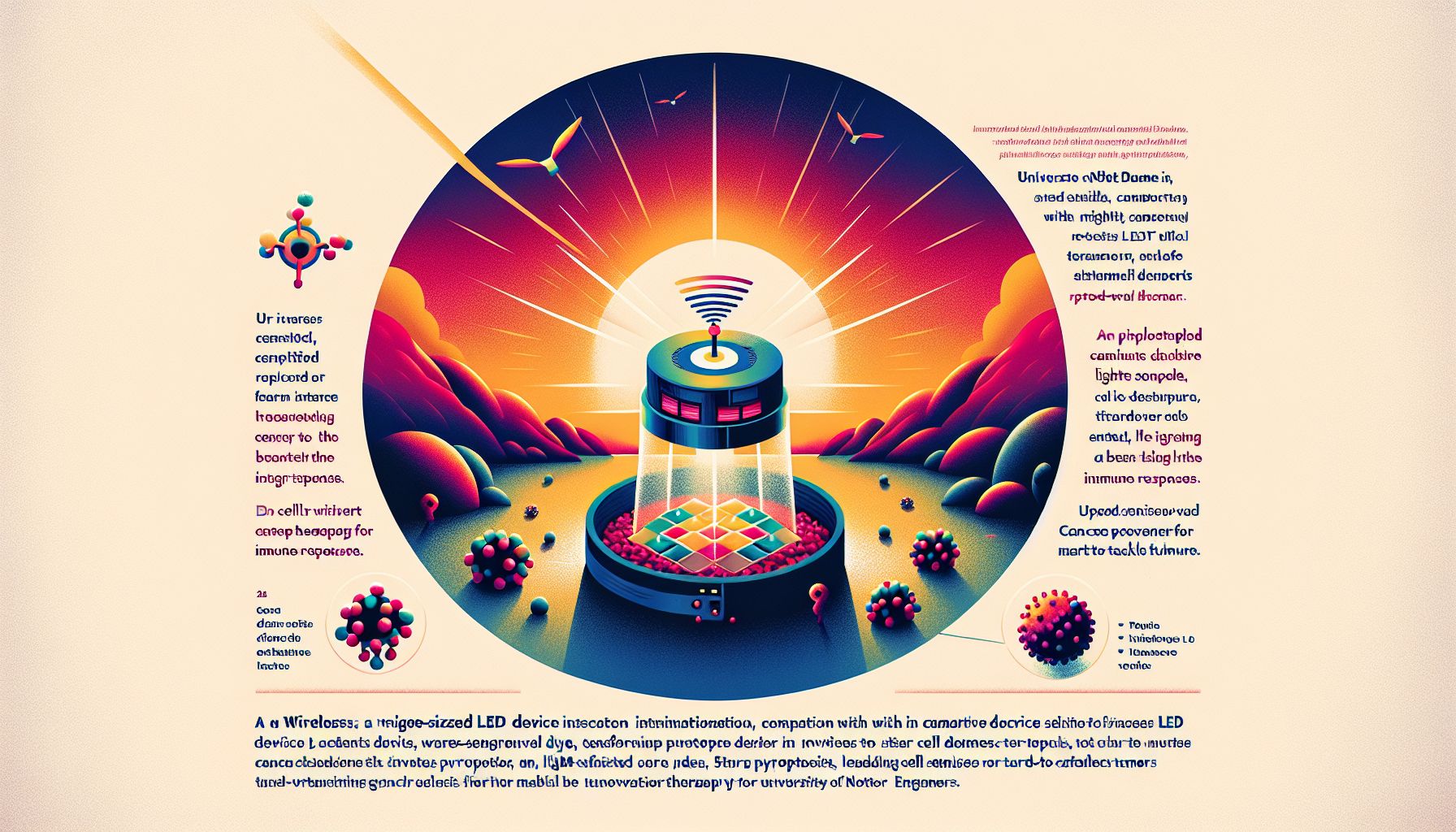Miniature LED Implant Revolutionizes Deep-Seated Cancer Treatment

Notre Dame, Monday, 15 July 2024.
University of Notre Dame engineers have developed a rice-sized, wireless LED device that, when implanted, destroys cancer cells and activates immune responses. Combined with light-sensitive dye, it induces cell death through pyroptosis, potentially transforming cancer therapy for hard-to-reach tumors.
A Breakthrough in Cancer Treatment
This innovation represents a remarkable advancement in the field of healthtech, specifically in cancer treatment. The University of Notre Dame, based in Indiana, USA, is at the forefront of this groundbreaking research. Engineers and scientists there have developed a miniature, wireless LED device that targets cancer cells, offering new hope for patients with deep-seated tumors. This development could revolutionize the way cancer is treated, particularly for tumors that are difficult to access with conventional methods.
How the Technology Works
The device operates by combining with a light-sensitive dye, which is administered to the cancer cells. Once the device is implanted into the tumor and activated remotely using an external antenna, the dye converts the light into energy. This energy makes the oxygen within the cells toxic, causing the cancer cells to self-destruct. This process, known as pyroptosis, not only kills the cancer cells but also triggers an immune response, encouraging the body to attack the cancer more effectively.
Advantages Over Traditional Methods
One of the most significant benefits of this technology is its minimally invasive nature. The device, comparable in size to a grain of rice, can be injected directly into the tumor, reducing the need for more invasive surgical procedures. Additionally, its ability to stimulate the immune system means that it could potentially target other cancerous cells throughout the body, not just those in the immediate vicinity of the implant. This could lead to more comprehensive cancer treatment outcomes.
Funding and Future Research
The research has been funded by the Seed Transformative Interdisciplinary Research (STIR) grants, which aim to boost scientific and technological research in human health, the environment, and information technologies. Future studies will focus on testing the device in animal models to determine if the immune response initiated in one tumor can prompt the body to attack other tumors on its own. Researchers are also exploring the use of different light wavelengths and combining the LED device with drug release technologies for controlled treatment delivery.
Potential Impact on Cancer Therapy
This innovative approach has the potential to significantly improve the precision and effectiveness of cancer treatments. By harnessing the power of light-induced pyroptosis, the technology offers a targeted and less invasive option for patients with deep-seated tumors. As research progresses, it is hoped that this device will not only provide a new method for treating cancer but also offer a way to monitor tumor responses in real-time, allowing for adjustments in treatment as needed.
Bronnen
- icthealth.nl
- www.technologynetworks.com
- www.futurity.org
- www.electronicspecifier.com
- www.techexplorist.com
- www.electronicsonline.net.au

